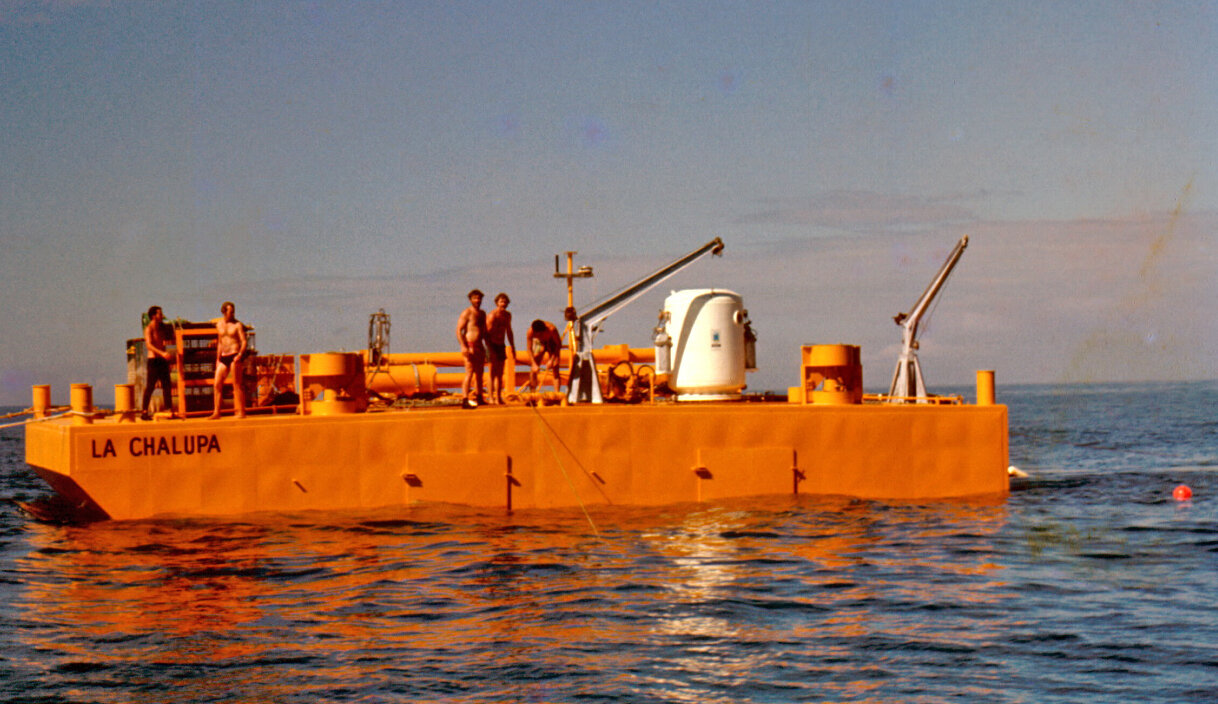
Unmatched experience with undersea habitats
Puerto Rico International Undersea Laboratory (PRINUL)
Funded by the government of Puerto Rico from 1971- 1976, Marine Resources Development Foundation ran the PRINUL program and engineered and constructed the LaChalupa habitat. Built to be mobile, LaChalupa was home base for 50 aquanauts in 11 missions in 10 different locations around the island of Puerto Rico. Research projects were funded by NOAA and the Puerto Rico Department of Public Works, among other government agencies.
MarineLab Undersea Laboratory
In 1984, the US Naval Academy donated its engineering project “MEDUSA” to MRDF. After refurbishment, the MEDUSA was renamed the “MarineLab Undersea Laboratory” and started hosting groups of high school students from Broward County, FL. In addition to these student programs, the MarineLab Undersea Laboratory was used in extensive research studies using Doppler ultrasound to detect previously undetected nitrogen bubbles in divers, resulting in numerous publications in Undersea Biomedical Research and the Journal of Applied Physiology. The MarineLab Undersea Laboratory was brought back to the surface in 2018 and is now a museum open to the public.
Jules’ Undersea Lodge
The LaChalupa habitat received a makeover in 1986 and was reborn as Jules’ Undersea Lodge, the world’s only underwater hotel. MRDF provided its expertise in rehabilitating the habitat and in providing operational guidance. In addition to recreational divers spending the night, Jules’ has hosted research programs such as the NASA 30-day mission, various missions with astronauts in training, and was the setting for achieving two world records for the longest time living underwater: one set by aquanauts Bruce Cantrell and Jessica Fain in the Classroom Under the Sea program in 2014, in which they were underwater for 73 days, and our most recent mission Project Neptune, in which Dr. Joseph Dituri spent 100 days submerged in the lodge.



